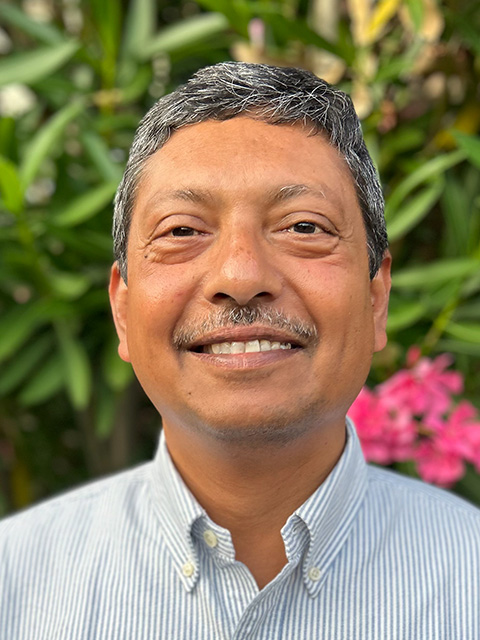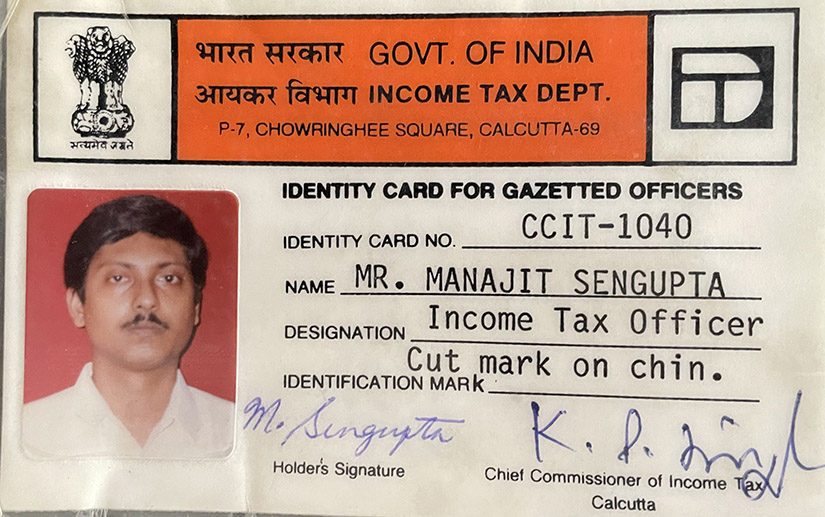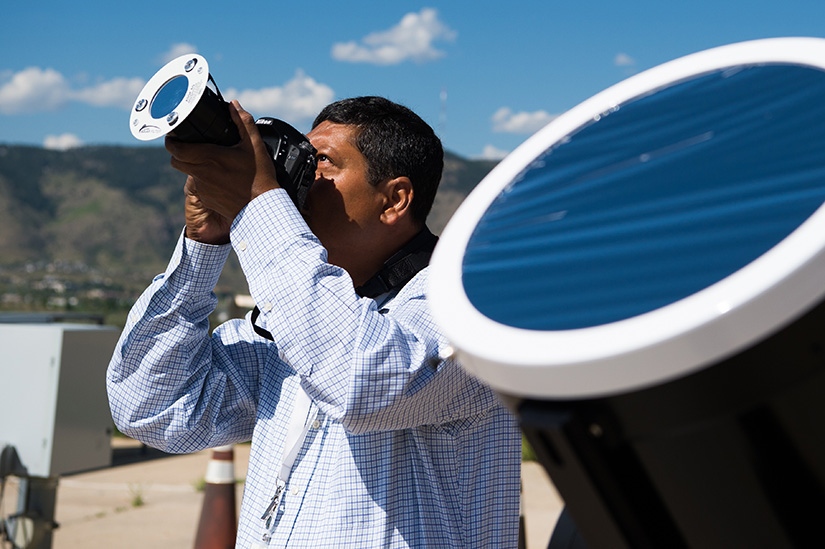Former Tax Fraud Investigator Manajit Sengupta Thinks Big as a Distinguished Researcher
The young inspector in Calcutta, India, smelled something fishy.
A corporate tax return filed by an established wire cable manufacturer didn’t quite add up. For 30 years, this firm had somehow stayed in business, claiming a tiny profit on millions of dollars in sales—and therefore paid only a small amount of taxes annually.

National Renewable Energy Laboratory (NREL) Distinguished Researcher Manajit Sengupta recalled how he, as a 20-something-year-old educated in theoretical physics, started pondering the problem.
“I sometimes thought of things in non-accounting, different ways,” Sengupta said, a trait of independence that he maintains today.
He considered the issue in a new light by asking unexpected questions: How much raw material did this company need to produce something—that is, how much metal came into the warehouse? How much finished cable was actually shipped from the factory? He then calculated that the final products were far less than would be expected from the supposed volume of raw materials. “I brought my science knowledge to work,” he smiled.
Sengupta, who had a staff of 10 backed with the power to summon police on any reluctant taxpayer, called in the company’s lawyer for an explanation. The man claimed that half of the incoming raw materials ended up as scrap. “Essentially, they exaggerated how much they had in raw materials” to justify tax write-offs, he remembered. “I knew there were some losses, but they should be reasonable, not 50%.”
Convinced he had uncovered a scam, Sengupta confronted the company’s lawyer, who basically admitted that “we’re caught and have to do something.” Another case solved by inspector Sengupta from the 14,000 returns he and his staff examined yearly—a massive task because they did all the work manually, without the help of computers, in the early 1990s.
“I got lots of bad guys but it was hard,” he said, and after five years of such cat-and-mouse “I got tired of catching tax evaders. It was fun at first, but I wanted to see the world.” So, he quit the secure job with prestige as well as a pension, much to his parents’ dismay. He was not concerned. “You only have one life, and you need challenges,” he said.
Also, he wanted to get back into science—but was not certain how. Sengupta began looking at applications of physics in the world, a change from mere theory he had studied. Fortunately, while working as an inspector, he had taken a course in environmental pollution control. “I thought, ‘Wait a minute. The atmosphere is fascinating—and this is all physics. And the environment is important.’”
Sengupta applied to graduate schools in the United States. “I thought nobody would take me after so many years,” he said. He was wrong. A number of schools offered him scholarships, but he chose Penn State University because his future advisor personally wrote him, detailing all the research options open to him. Once there, he was surprised to learn that Penn State was among the top schools for meteorology. Additionally, he was immediately impressed by the United States.
“I was awed. Everyone was so welcoming,” he said. “This is a great country.” Secondly, he was “amazed by how big researchers in America can think—tackling major problems. In India, people didn’t think this way.” Calling it the best decision of his life, he said, “I’m at the right place. I can learn from them.” And he did.
Manajit Sengupta used his physics training while working as an IRS inspector in India
in 1995. Image from Manajit Sengupta, NREL
Heading West and Finding NREL
After earning his Ph.D. in Atmospheric Sciences and Meteorology in 2002, Sengupta followed his advisor to Pacific Northwest National Laboratory in Washington for three years before coming to Colorado State University (CSU) for almost six years. His research areas included cloud and solar radiation modeling for future satellites and the impact of clouds on climate change.
While at CSU, he attended a workshop hosted by NREL scientist Tom Stoffel and other NREL staff because he was interested in the topic of deriving solar radiation using satellites. After talking with Sengupta all day, Stoffel and his colleagues decided Sengupta should come to NREL.
“They asked, and I said, ‘Sure. Why not? It’s a great place,’” he said.
With grand plans, he asked for a big computer because he wanted to process satellite data. A shocked Information Technology staffer replied, “You want more storage space than all of NREL has.”
It took about six months, but he kept pushing, and leadership found funding—as well as someone to administer it. The investment paid off and led to the development of the National Solar Radiation Data Base, the world's leading public solar data product. Sengupta estimates that there are more than 400,000 users annually.
He leads Solar Measurement and Modeling at NREL, and his group maintains expertise in solar and atmospheric resource measurement, modeling, and forecasting for renewable energy applications. Sengupta credits his team for the high impact. And for them, he said, “I push the boundaries. Sometimes—my motivation is to get my team the resources they need. If I need to, I go talk to the administration.”
He also followed his one-time profession by earning an MBA in finance while at NREL because he enjoyed the encounters with accounting in his 20s.
Manajit Sengupta takes a photo in 2017 using a special filter over his camera at NREL. Photo by Dennis Schroeder, NREL
Staying connected goes to the heart of his philosophy. “People matter to me. What we do is not just a set of numbers and budgets. It’s peoples’ livelihoods. If I can get the trust of people, they will do the best work,” he said. And now, life is easy—with highly-motivated staff.
He intends to keep thinking in new ways and believes that is what is expected of NREL. “National labs are meant to solve much bigger problems than a university professor with a couple of grad students. We need to solve the nation’s problems. We should think big,” he said. In particular, he wants junior scientists to see a pathway to tackle the biggest climate challenges.
Outside of the laboratory, Sengupta and his wife are involved in the Colorado Milonee, a group founded by Bengali families to promote Indian culture along with engagement in charity work.
For Sengupta, it boils down to an open-minded approach to life—an approach that can include being a tax inspector, physics student, solar expert, an NREL leader recognized as a Distinguished Researcher, and a community supporter. “Do good for everybody. Take care of people,” he said. “That gives you the most satisfaction.”
Sengupta was one of seven NREL staff to receive the Distinguished Member of Research Staff (DMRS) designation in 2023. He was recognized for “being a world-renowned scientist working assiduously toward achieving easily accessible, high-quality solar resource information that reduces the cost of grid integration, solar energy prospecting, financing, deployment, and operations.”
The DMRS designation is intended to provide greater recognition to NREL researchers. It should also position individuals to work in more strategic and technical leadership roles, with continued expectations for their contributions to further enhance NREL's reputation and mission objectives.

